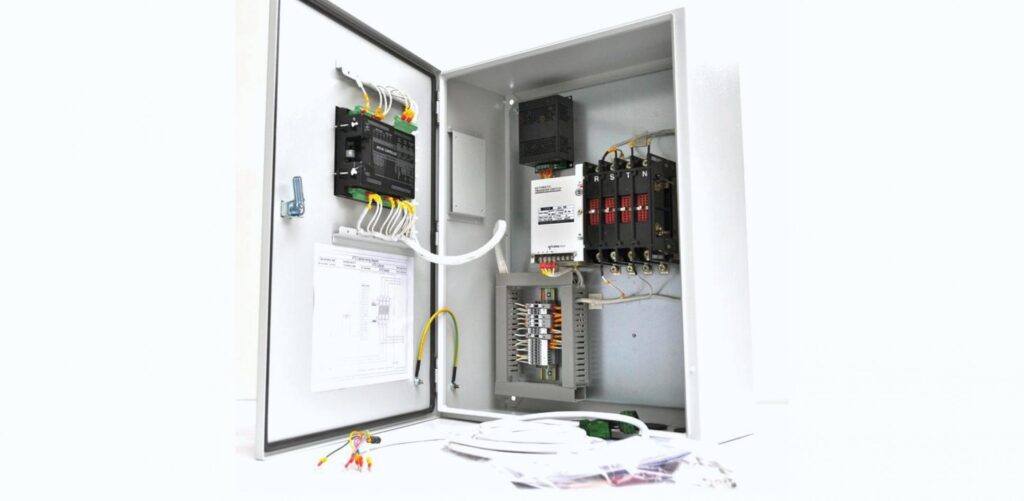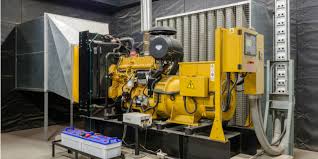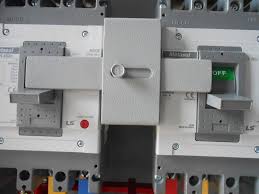Generator Transfer Switches: Benefits for Your Home or Office
Today, more and more homes and office buildings are installing permanent generators that can operate all or most of the appliances and electrical items in the building. The use of permanent whole-house generators has become necessary as people are more dependent upon electronics than ever before. For example, even fireplaces, stoves and phones now require electricity so having a power outage can make it literal impossible to stay in your home or office building. Of course, if you have installed a whole house generator or if you have installed a generator for your office environment, you need to be able to use your generator. Generator transfer switches allow you to do just that.
What are Generator Transfer Switches?
Generator transfer switches are switches that are used to switch the source of power to your home. Typically, power enters your home through a main power line from your electric company. The power is then distributed to all of the items in your house that require electricity so those items can operate. When the power goes out, however, you need to change the source of the power. Instead of drawing from the power line that gets electricity from the utility company, you need to draw power from the generator and transfer that power to the appliances and items in your home or office. Of course, when the power goes back on, you will then need to do the reverse and switch back to having your power come from the electric company.
When making the switch from generator power to power provided by the electric company, it is important that power from the generator does not travel back out and down the main line that is required to bring power in from the electric company. This line is meant only for power to come in and it can be dangerous to have power from the generator travel out. A generator switch makes sure that this does not happen. A generator transfer switch has an “Off” position that the user must switch to before the switch from generator to electric-company power is made. This ensures that the power is completely off before the change is made so that no power travels the wrong way down the power line to cause damage
Benefits of Generator Transfer Switches
Generator transfer switches provide many benefits. The most significant and important benefit is that they make the use of a generator safe. In many locales, you are required to have your generator transfer switch installed by an electrician, which helps to go an extra step further in ensuring the safe use of your generator in your home or office.
Generator transfer switches can also make the use of your generator much more convenient. It is possible to opt for an automatic generator transfer switch so that when the power goes out, the source of your power can switch automatically over to your generator and you will not lose power to the important systems in your home. Automatic generator transfer switches so have the advantage not just of safety but also of maximum convenience as well.

What Does The Transfer Switch Do?
In simple terms, a transfer switch is a permanent switch that connects to your power box that changes the power load between two sources. For permanent sources of backup power, this happens automatically when the first source of power becomes unavailable. This is ideal because it seamlessly keeps the energy flowing with minimal delay. In the case of a generator for residential whole house power use, the generator is plugged into the transfer switch located on the circuit panel. When the generator is turned on, the transfer switch changes the load from grid power to the generator.
What Generators Need A Transfer Switch?
Standby generators for homes and businesses almost always need one. Since they are always waiting for when the power goes down, it is important to have this extra piece of equipment to keep the power flowing without downtime. However, portable generators don’t strictly need a transfer switch, but it is usually a good idea. The biggest benefit of having a transfer switch in a residential setting is that you gain the ability to power things up via your circuit breaker panel instead of having to use extension cords. This includes hardwired devices, such as your dishwasher, hot water heater, air conditioning, and ceiling fans. All you have to do is plug the portable generator into the transfer switch and you’re good to go!

How a Transfer Switch Works
Skipping the transfer switch and connecting your portable generator directly to your electrical service panel could fry appliances, endanger utility workers who might be working on power lines, or damage your generator. Plus, you don’t always know when power is restored, unless you see your neighbors’ lights go on.
A transfer switch lets you easily and safely power what you need most—your refrigerator, your furnace or boiler, a sump pump, and more. Think about it: Power to these devices can come from your utility or your generator but not both. The transfer switch works by having a dedicated set of switches for each of the circuits you want to power.
With a transfer switch (about $500 to $900 to install, including labor), you’ll have one connection to make—plugging one end of a cable into the portable generator and the other into a dedicated box connected to the transfer switch.

How Does a Manual Transfer Switch Work?
When the power goes out, everything will go dark if you have a manual transfer switch. You’ll need to grab your flashlight and go out to the generator to start it manually and connect it to the transfer switch. Then you’ll need to switch your home or business over to receive power from the generator. When utility power comes back on, you need to manually switch the power back to the utility company and turn off the generator.
How Does an Automatic Transfer Switch Work?
As the name implies, everything is automatic with this type of transfer switch. The power may go out for a second or two, but the transfer switch senses this and automatically signals your generator to start up. Then the transfer switch connects your home or business to the generator. When utility power comes back on, the transfer switch disconnects the power supply from the generator and shuts the generator back off until the next power outage occurs.
What is the difference between an interlock and a transfer switch?
An interlock needs a human to operate it. They cost less, in general.
A transfer switch can be (and usually is) automatic. They cost more, in general.
An interlock setup can usually feed power to any circuit in the panel (but if you overload the generator input the generator breaker will trip.) This is also controlled manually, by the user turning other breakers off and on.
A transfer switch setup can only feed specific circuits, since automatic operation means there’s nobody to turn off circuits to shed load, so the loads connected to the generator must be less than or equal to what the generator can supply, if all are operating.